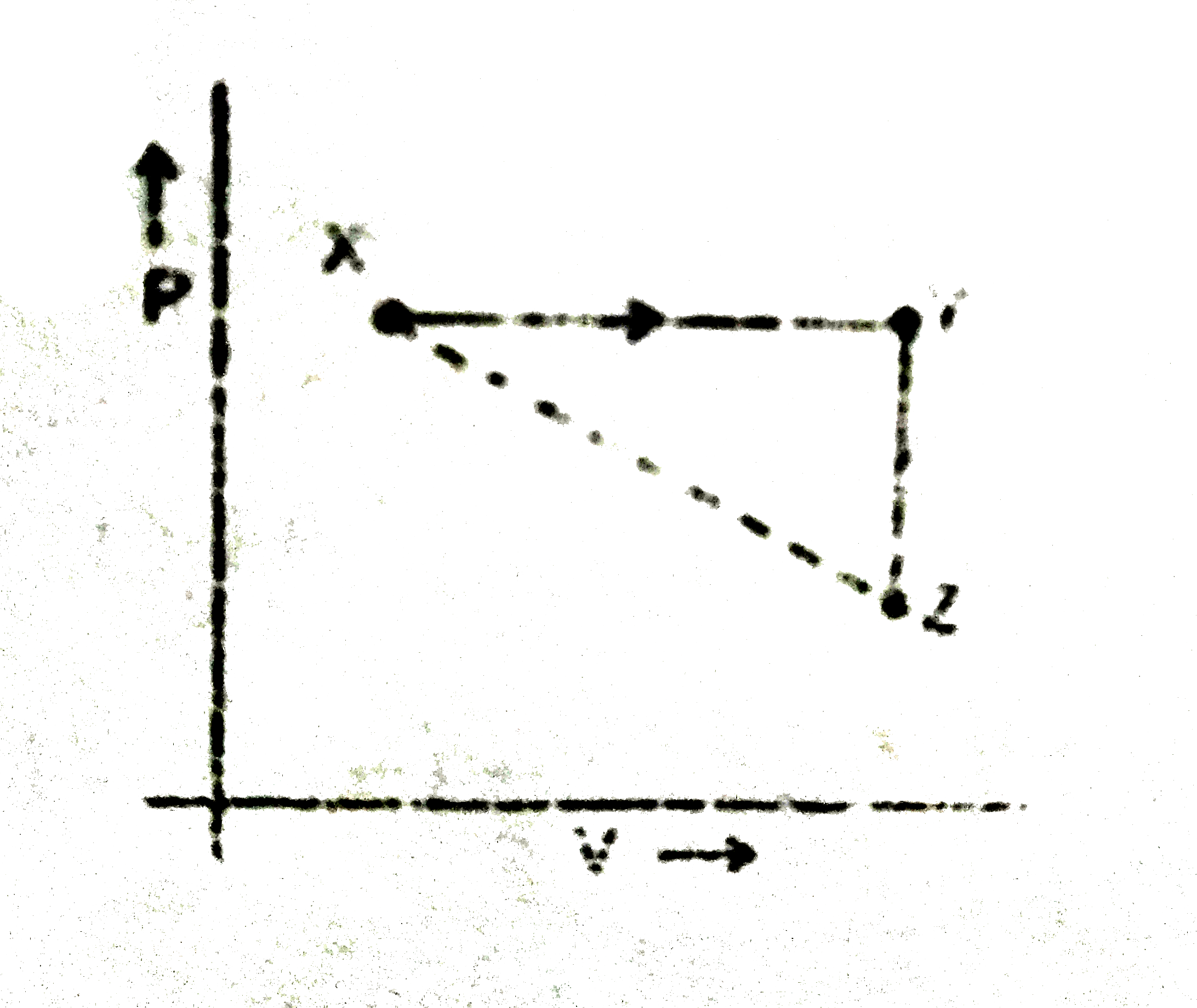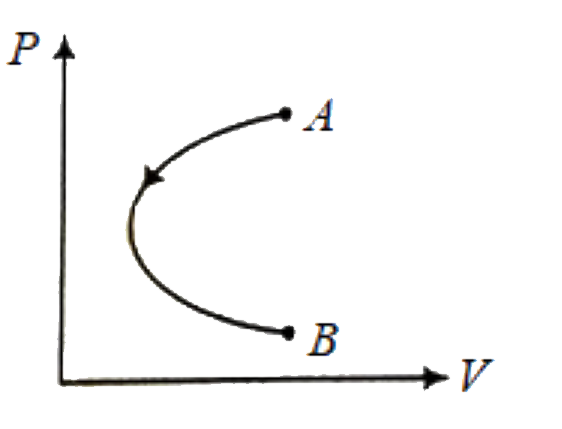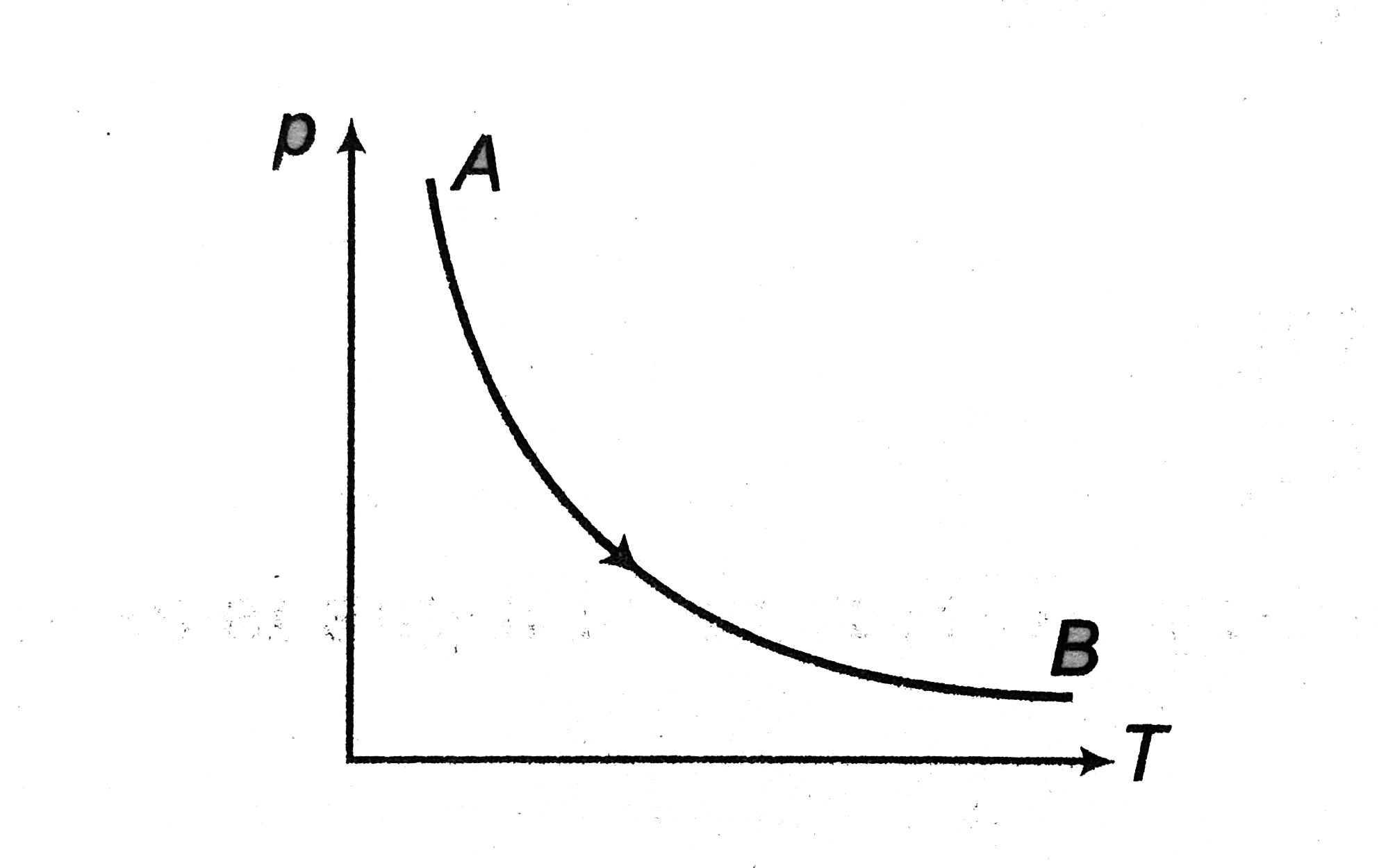For an ideal gas, consider only P−V work in going from an initial state X to the final state Z. The final state Z can be reached by either of the two paths shown in the figure. Which of the following choice(s) is (are) correct? [Take ΔS as change in entropy and w as work done]
![For an ideal gas, consider only P-V work in going from an initial state X to the final state Z. The final state Z can be reached by either of the two paths shown in the figure. Which of the following choice(s) is (are) correct? [Take DeltaS as change in entropy and w as work done]](https://d10lpgp6xz60nq.cloudfront.net/physics_images/DPB_PHY_CHM_IX_C11_E01_145_Q01.png)
ΔSX→Z=ΔSX→Y+ΔSx→z
Wx→z=Wx→y+Wy→z
Wx→y→z=Wx→y
ΔSx→y→z=ΔSx→y
The correct Answer is:A, C
(A)ΔSx→2=ΔSx−y+ΔSy→z(correct)(B)Wx→y=Wx−y+Wy−z(Incorrect)(C)Wx→y→z=Wx−y(correct)(D)ΔSx→y→z=ΔSx−y(Incorrect)

Topper's Solved these Questions
- BOOK - RESONANCE ENGLISHCHAPTER - THERMODYNAMICSEXERCISE - exercise-3 part-1 Advanced level Solutions30videos
THERMODYNAMICS
- BOOK - RESONANCE ENGLISHCHAPTER - THERMODYNAMICSEXERCISE - exercise-3 part-2 Advanced level Solutions27videos
THERMODYNAMICS
- BOOK - RESONANCE ENGLISHCHAPTER - THERMODYNAMICSEXERCISE - exercise-2 Part:(IV): comprehension8videos
THERMODYNAMICS
- BOOK - RESONANCE ENGLISHCHAPTER - TEST SERIESEXERCISE - CHEMISTRY50videos
TEST SERIES
Similar Questions
An ideal gas is taken from an initial state i to a final state f in such a way that the ratio of the pressure to the absolute temperature remains constant. What will be the work done by the gas ?
View SolutionP - V diagram of an ideal gas is shown. The gas undergoes from initial state A to final state B such that initial and final volumes are same. Select the correct alternative for given process AB.
 View Solution
View SolutionA system can be taken from the initial state p1,V1 to the final state p2,V2 by two different methods, let ΔQandΔW represent the heat given to the system and the work done by the system. Which of the following must be the same in both the method?
View SolutionAn ideal gas change from state a to state b as shown in Fig. what is the work done by the gas in the process?
 View Solution
View Solutionshows three paths through which a gas can be taken from the state A to the state B. calculate the work done by the gas in each of the three paths.
 View Solution
View SolutionAn ideal gas can be taken form initial state 1 to final state 2 by two different process. Let ΔQ and W represent the heat given and work done by the system. Then which quantities is/are same in both process (where ΔU= internal energy of gas)
View SolutionWhen a sample of ideal gas is changed from an initial state to a final state, various curves can be plotted for the process like P-V curve, V-T curve,P-T curve etc.
For example, P-V curve for a fixed amount of an ideal gas at constant temperature is a rectangular hyperbola, V-T curve for a fixed amount of an ideal gas at constant volume is again a straight line. However, the shapes may vary if the constant parameters are also changed.
Now, answer the following questions :
Which of the following graphs is not possible for a fixed amount of ideal gas upon moving from initial state A to final state B :View SolutionAn ideal gas is undergoing a cyclic thermodynamic process in different ways as shown in the corresponding P-V diagrams in column 3 of the table. Consider only the path from state 1 to state 2. W denotes the corresponding work done on the system. The equations and plots in the table have standard notations as used in thermodynamic process. Here is the ratio of heat capacities at constant pressure and constant volume. The number of moles in the gas in n.


Which of the following options is the only correct representation of a process in which ΔU=ΔQ−PΔV?View SolutionTwo moles of an ideal monoatomic gas are expanded according to the equation pT=constant form its initial state (p0,V0) to the final state due to which its pressure becomes half of the initial pressure. The change in internal energy is
 View Solution
View Solution1mol of a gas is changed from its initial state (15L,2atm) to final state (4L,10atm). If this change can be represented by a straight line in P−V curve, calculate the maximum temperature that, the gas attained.
 View Solution
View Solution

